#Solar Photovoltaics
Photo

Dining Room Santa Barbara
Example of a mid-sized trendy light wood floor great room design with white walls and no fireplace
#fleetwood windows#dining room#green roof#oak flooring#tongue groove ceiling#solar photovoltaics#beach home
0 notes
Photo

Family Room Santa Barbara
Example of a mid-sized contemporary enclosed family room design with gray walls, a music area, no fireplace, and no television.
1 note
·
View note
Text
Energy Calculations
Mechanical Systems – Energy Calculations
ARCHITECTURAL ENGINEERING PE EXAM SPECIFICATIONS
Mastering Building Energy Calculations: A Guide to Efficient Construction
In an era of environmental consciousness and rising energy costs, understanding and optimizing building energy calculations is crucial. Whether you’re an architect, engineer, or construction professional, having a firm grasp of energy…

View On WordPress
#Building Energy Calculations#Building Energy Consumption Patterns#Daylighting#Geothermal Systems#Life Cycle Cost Analysis#Lighting Quality#Occupancy Sensors#Solar Photovoltaics#Wind Turbines
0 notes
Photo

Contemporary Dining Room - Great Room
#An illustration of a medium-sized#modern great room with a light wood floor#white walls#and no fireplace dining room#oak flooring#solar photovoltaics#fleetwood windows#tongue groove ceiling#beach home#santa barbara
0 notes
Text
why does “photovoltaic goats” sound like the most Bildad the Shuhite (Good Omens version) idea ever
34 notes
·
View notes
Text
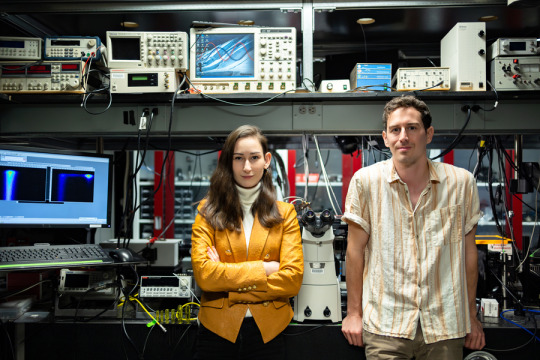
Study unlocks nanoscale secrets for designing next-generation solar cells
The work will help researchers tune surface properties of perovskites, a promising alternative and supplement to silicon, for more efficient photovoltaics.
Perovskites, a broad class of compounds with a particular kind of crystal structure, have long been seen as a promising alternative or supplement to today’s silicon or cadmium telluride solar panels. They could be far more lightweight and inexpensive, and could be coated onto virtually any substrate, including paper or flexible plastic that could be rolled up for easy transport.
In their efficiency at converting sunlight to electricity, perovskites are becoming comparable to silicon, whose manufacture still requires long, complex, and energy-intensive processes. One big remaining drawback is longevity: They tend to break down in a matter of months to years, while silicon solar panels can last more than two decades. And their efficiency over large module areas still lags behind silicon. Now, a team of researchers at MIT and several other institutions has revealed ways to optimize efficiency and better control degradation, by engineering the nanoscale structure of perovskite devices.
Read more.
30 notes
·
View notes
Note
Can you help debunk what I have been told that solar panels are bad for the environment and cause more waste because they take a long time to decompose and wear out in a couple years?
Okay, let me try and answer this. Because yes, this is a more complicated issue, than a lot of people make it out to be.
So, let me start with the big thing that gets often overlooked: Without even looking into ressource use, big photovoltaic power plans have definitely a negative environmental impact. Not as a negative as anything fossil energy related, but negative never the less.
With power plants I mean those giant fields where we plaster photovoltaic panels over acres of land, to have a central power plant based around photovoltaic. And while we might not get around some of those big power plants, part of the energy revolution should be to move towards micro grids instead of current macro grids (so, decentralization), hence lowering the need of central powerplants.
Now, a lot of people who are anti-pv - mostly people who are from the fossil fuel lobby, but also some nuclear-lobby folks - tend to exaggerate those negative impacts... But they are still there. (Mostly having to do with depending on the type of pv panel used they can impact the ground temperature - and of course they just disrupt the environment.)
Sooo... Let's get to the raw materials. The important bit in photovoltaic is silicon. And this is one of the good old environmentalist "well actaully" things. Because when I was a kid I got told: "Oh, silicon is never a problem, because it is just sand! We have so much sand!" But of course I learned that it is not quite as easy. Because not all sand is created equal and not all can be used for stuff like concrete (which is shit either way), glass or photovoltaic.
Though still it is not as much of an issue as a lot of rare earth materials. Some of which are currently used in photovoltaic. But here is the other thing...
Photovoltaic is currently one of the fastest developing energy technologies. Basically anything I am gonna tell you here will be outdated next year. I guarantee.
But yes, in the creation of photovoltaic we currently use rare earth metals, that are at times sourced through bad means. Both in terms of it being mined through slave work and through the mining being done in a way that harms the environment. But... for one, we are currently working on reducing the need for rare earth metals in the creation of photovoltaic. And like with nuclear materials: We could mine the materials in a much more sustainable way - both on a social and ecological level. It is just that the current capitalist system has all the incentives to mine those materials wiht exploited workers or even slaves, and to not take care of the waste created in the mining operation.
And this gets us back to the recycling.
Short version: Yeah, we have ways to recycle about 65-80% of the materials in a photovoltaic panel. And like everything else: We are working on it and it will probably go up to 90%. But once again: Like with all recycling the issue is, that recycling materials is way more expensive than getting new materials. Which is why under capitalism all the things we could recycle often do not get recycled.
But it is possible.
tl;dr: Yes, there are drawbacks to photovoltaic, but it is not as bad as many make it seem. And a ton of the drawbacks are not inevitable but only exist because of capitalism.

#solarpunk#photovoltaic#solar#solar power#solar energy#recycling#environmentalism#sustainability#anti capitalism
119 notes
·
View notes
Link
“The French Senate has approved a bill requiring new and existing lots with more than 80 spaces to be at least half covered with canopies of solar panels that sit over the parking spaces. Assuming the bill comes into effect later this year, parking lots with more than 400 spaces must be compliant by 2026; smaller ones with 80 to 400 spaces will be given until 2028.”
“A 2015 study concluded that within California’s cities and other developed areas, there’s sufficient solar development potential to power the state three to five times over.“
“According to a 2021 study Pearce coauthored, installing solar panels over the parking lots of the 3,751 Walmart supercenters spread across the US alone could generate the same amount of electricity to that of around a dozen coal-fired power plants.”
#solar#solar power#solar panels#photovoltaic#france#parking lots#climate#climate crisis#climate change#wired#environment
196 notes
·
View notes
Text
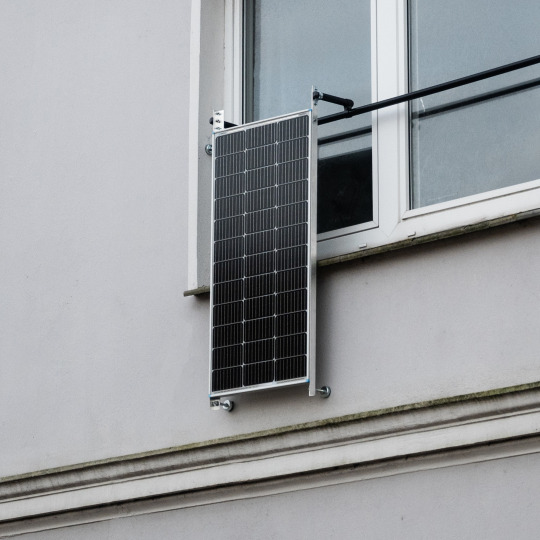


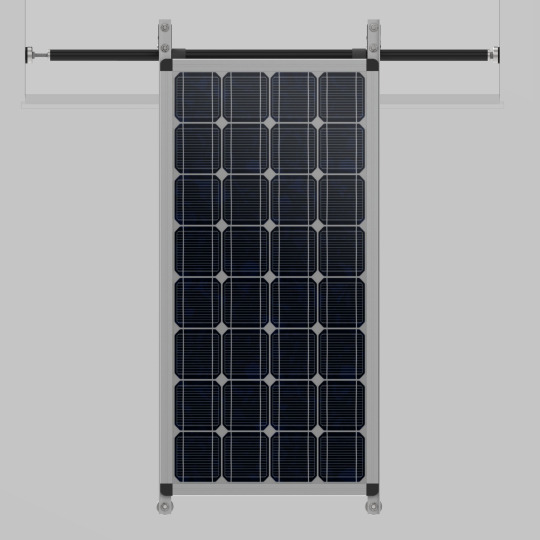
I'm living in a flat without balcony on the second floor. I'm not allowed to modify the building stock, like drilling holes into exterior walls. Nonetheless, I want to use solar energy to cover the base load of my flat. Over the last couple months I developed a DIY solution to accomplish just that. A solar panel is clamped into a window embrasure with a telescopic rod. The power is carried through the window into my flat with a special flat conductor.
This is a work in progress, so please visit the project documentation at https://hackaday.io/project/192011-window-mount-for-solar-panels if you are interested.
19 notes
·
View notes
Text

A solar cell. A photovoltaic cell. Solar energy.
Photography.
#solar cell#solar cells#solar energy#photovoltaics#photovoltaic cell#photovoltaic cells#energy#photography#photo#photograph#picture#photos#photographs#image
4 notes
·
View notes
Text
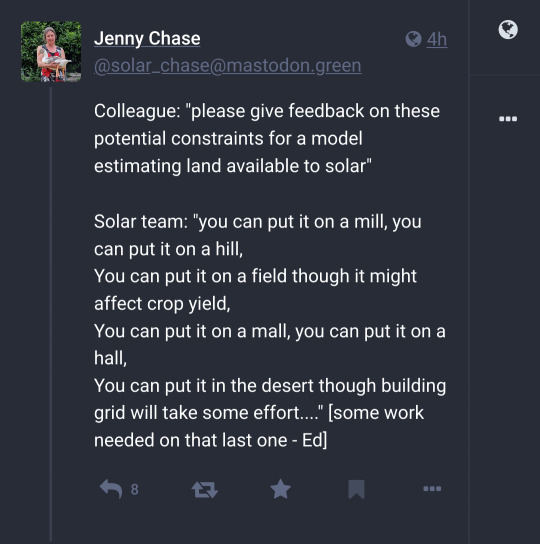


from mastodon
8 notes
·
View notes
Text

Check out them curves 👷🏽♂️
#perspective#photography#my photos#photographers on tumblr#adventure#nature photography#norcal#bay area#bayarea#northern california#nature#solar power#solarpunk#photovoltaic#landscape photography#photoblog#Los Baños
17 notes
·
View notes
Text

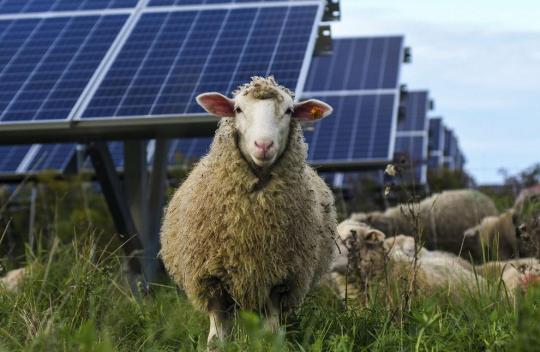




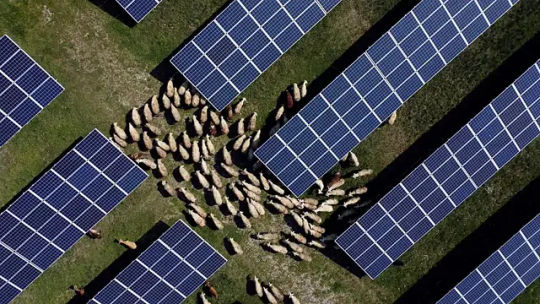

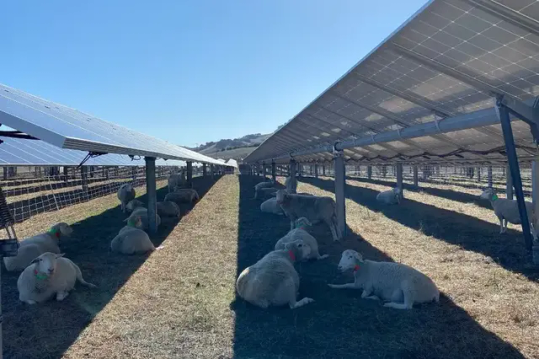
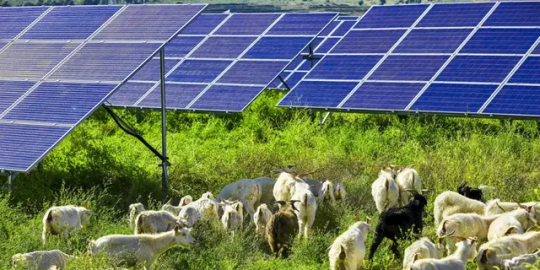

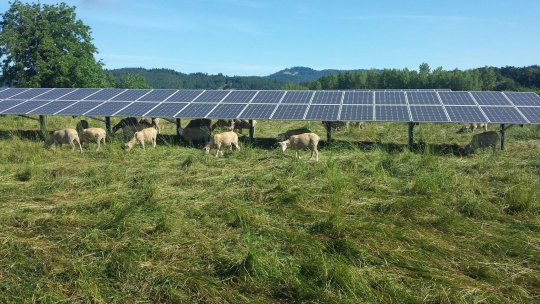
Sheep of a solar-farm flock together charmed
#solar farm#solar sheep#solar#sheep#environment#Solarpunk#inspiration#solar grazing#solar farming#solar farmer#agrivoltaics#agricola's#photovoltaic#sheepvoltaic#poem#climate#climate hope#vibe#solar vibe#aesthetic#solar flock
8 notes
·
View notes
Text
#solarpanel#solarenergy#solar#solarpower#solarpanels#renewableenergy#solarsystem#greenenergy#gogreen#cleanenergy#gosolar#solarpowered#energy#solarpv#solarinstallation#photovoltaic#sustainability#solarcell#renewables#panelsurya#renewable#environment#plts#inverter#sun#sustainableenergy#energiasolar#offgrid#sunpower#electricity
2 notes
·
View notes
Text
Solar power - taste the sun
Without the sun, we would be (frozen) toast. That much is for sure. The sun directly or indirectly powers most forms of renewable energy: Without the sun, there would be no water cykle, so no water power. The differences in temperature and air pressure, set in motion by the energy of the sun, creates wind. And of course, we can use the sun in an array of ways to help us in our daily lives.
"The power of the Sun at the Earth, per square metre is called the solar constant and is approximately 1370 Watts per square metre (W/m2)." (https://www.sws.bom.gov.au/Educational/2/1/12, Australian Space Weather Forecasting Centre). That is a lot of watts per square meters. The number differs by a few percent depending on time of the year and our actually elliptic orbit around the sun, but there is still a lot of energy to use.
We can use the thermal energy and the light waves of the sun to our advantage in the following ways:
Active solar heating uses solar collectors, water pipes go through a glazed or unglazed panel. The panel is dark coloured to absorb the most of the solar power. The water in the pipes is heated up and can be used for heating.
Passive solar heating uses the warmth of the sun without a panel, it is for example used in passive houses. The heat from the sun enters the house through big windows, the house is so well insulated that it keeps that warmth.
Daylight can be used as a source for light to avoid artificial lighting.
Concentrated solar collectors contain a parabolic structure that concentrates the solar rays in one point. In that point, there is a pipe containing water or a high temperature heat transfer fluid, for example mineral oil. The fluid will then as well be used to create stream for energy production.
Power Towers are... towers. Surrounded by mirrors that all reflect sunlight onto the receiver on the top of the tower. There is a tank containing either water, creating steam for direct energy production, or salt. The concentrated solar power is enough to melt that saltv (melting point is often at over 200°C) and it can be used to either produce steam for electricity directly or it can be stored for a few hours, making 24-hour energy production possible.
Photovoltaic can be used to produce electricity directly from sunlight. It is a pretty cool process, so I´ll explain it a bit more extensive. Photovoiltaic cells have two layers of silicon, a very common mineral, divided by an insulator. Silicon is a semiconductor, that is a material that normally doesn´t have free electrons, which make up electricity, but if you add a bit of energy, it frees electrons and makes an electrical current possible. Now, the two layers of silicon are also "doped" with impurities, the upper layer with, for example, phosphorus, which adds free electrons, and the lower layer with, for example, boron, which adds a slight positive charge. The upper layer is called n-type silicon, the lower layer p-type silicon. If the sun shines on the photovoltaic cell, it frees the electrons from the upper layer. They are naturally driven to the lower layer, which is lacking electrons, but there is an insulator between them. Add a cable that´s conducting electricity, lay it through your house, and connect the upper to the lower level. If the sun hits the solar panel, it frees the electrons, they are travelling through your cable, bam! Electricity! Since that was a bit complicated, here is a picture:

(Source: Cosmos Magazine)
The perk about photovoltaic is that it is made from very common materials and that it can be put virtually everywhere. The downsides of it, and most other forms of solar energy is the obvious: It depends on the sun shining. Only pretty big photovoltaic panels work if it´s cloudy and there are places on the earth where the amount of sunlight varies strongly during the year. I, for example, am living in Sweden and the amount of sunlight hours (if they exist at all) during winter is so small and the angle of the sun so low that solar power just won´t cut it.
However, there are places on the earth where a lot could be done with solar power. Only a small part of the Sahara desert would be needed to cover Africa´s and Europes entire need for energy. Only a small part of Nevada would be enough to cover the US´s. Then of course, the question is how to transfer that energy and the whole power grid would have to be worked over, but sooner or later, we would have to do that anyways. There is a LOT of potential for solar power and the prices for it have gone down significantly in the past years:
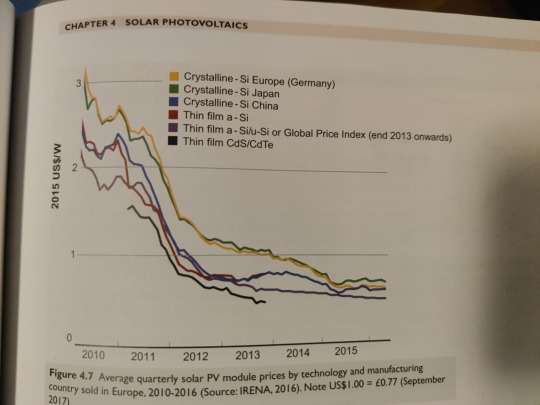
(Source: Peake (2018): Renewable Energy. Power for a sustainable future.)
So that was a bit about solar power. We can hope that this will be a big part of our way to a better, greener, brighter future.
Source for pretty much all of it: Peake (2018): Renewable Energy. Power for a sustainable future. Fourth edition. Oxford university press.
#environmentalism#science#solar power#photovoltaic#nature#climate change#climate action#hope for the future#environmetal engineering#engineering
2 notes
·
View notes
Text
Chemists at Kaunas University of Technology (KTU), Lithuania have synthesised materials that can improve solar elements for indoor use. Such photovoltaic cells, which can also be integrated into various electronic devices, generate electricity even in low-light conditions.
Consumption of oil and gas results in the increase of atmospheric temperatures, leading to global climate change, currently labelled a climate crisis. To combat this problem, efforts are being made to use renewable and environmentally friendly energy sources such as wind, water and solar power.
"Wind and hydro energy are constrained by high costs and location dependency, while solar energy is flexible, efficient and relatively inexpensive. However, the energy from indoor light sources and natural light entering through windows is lost every day," says Juozas Vidas Gražulevičius, Professor at the KTU Faculty of Chemical Technology and Head of the Chemistry of Materials research group.
Read more.
#Materials Science#Science#Materials synthesis#Solar power#Photovoltaics#Perovskites#Kaunas University of Technology
14 notes
·
View notes